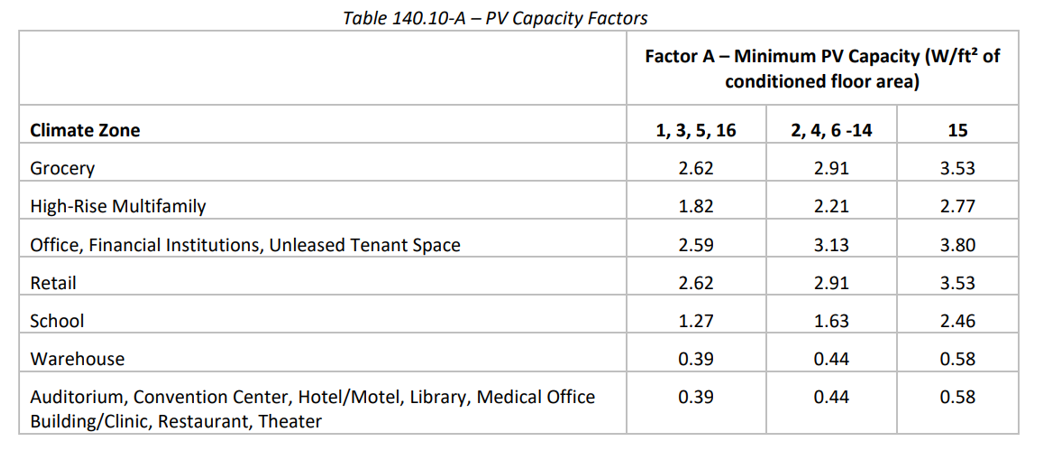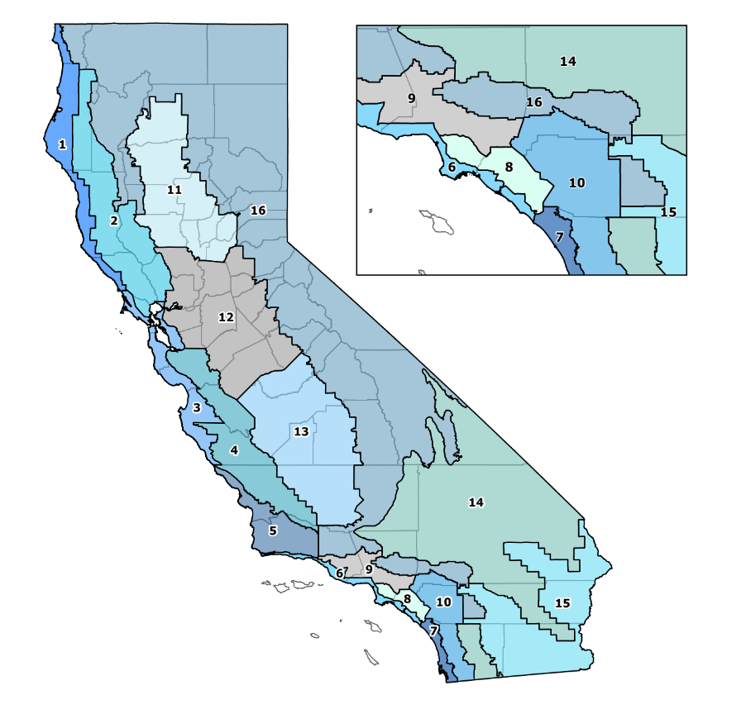The California Energy Commission (CEC) has published the latest version of the Building Energy Efficiency Standards, which encompasses residential and commercial properties. The Energy Code is modified every three years, containing energy and water efficiency requirements for newly constructed buildings and modifications to existing buildings. The 2022 update provides crucial steps in California’s progress towards achieving 100 percent carbon neutrality by 2045.
The 2019 standards laid the foundation by requiring all new residential homes to have a solar photovoltaic (PV) system installed, with new commercial buildings having to include roof space for solar panels. California became the first state in the United States to implement such a boldresidential solar mandate. With the 2022 Energy Code, California has made history once again as the first state to enact a solar + storage requisite. Approved last year through a unanimous vote, the order requires all newly constructed commercial buildings to have a solar photovoltaic (PV) array and an energy storage system (ESS) installed. We previously summarized this mandate and the effect it will have in a blog:A Guide to the California Energy Commission’s new Commercial Construction Solar + Storage Mandate.
With the 2022 Building Energy Efficiency Standards published and going into effect on January 1, 2023, we have outlined the rules and specifications of the solar + storage mandate to serve as a reference guide for California business owners and project developers. Note: The state standards below are minimum requirements; local jurisdictions may vary.
Solar Mandate
- Beginning January 1, 2023, all newly constructed buildings shall have a solar PV system installed.
- The following building types are subject: grocery, high-rise multifamily, office, financial institutions, unleased tenant space, retail, school, warehouse, auditorium, convention center, hotel/motel, library, medical office, building/clinic, and theater.
- System size should not be less than the smaller of the PV size determined by Equation 140.10-A, or the total of all available Solar Access Roof Areas (SARA) multiplied by 14 W/ft².
- SARA includes the area of the building’s roof space capable of structurally supporting a PV system and the area of all roof space on covered parking areas, carports, and all other newly constructed structures on the site that are compatible with supporting a PV system per Title 24, Part 2, Section 1511.2.
Equation 140.10-A
(CFA x A)/1000
CFA = conditioned floor area in square feet
A = PV capacity factor specified in Table 140.10-A for the building type
- No PV system is required if
- the total of all available SARA is less than 3% of the conditioned floor area
- the required PV system is less than 4 kWdc
- the SARA contains less than 80 contiguous square feet
- the building has an enforcement-authority-approved roof design that determines it is not possible for the PV system to meet ASCE-7-16, Chapter 7, Snow Loads
- a multitenant building is in an area where a load-serving entity does not provide either a virtual net metering or community solar program
Storage Mandate
- Beginning January 1, 2023, all buildings required to have a PV system shall also have a battery storage system.
- The rated energy capacity and the rated power capacity shall not be less than the values determined by Equation 140.10-B and Equation 140.10-C.
Equation 140.10-B
kWhbatt = kWPVdc × B / D0.5
kWhbatt = rated usable energy capacity of the battery storage system in kWh
kWPVdc = PV system capacity required by Section 140.10(a) in kWdc
B = battery energy capacity factor specified in Table 140.10-B for the building type
D = rated single charge-discharge cycle AC to AC (round-trip) efficiency of the battery storage system
Equation 140.10-C
kWbatt = kWPVdc × C
kWbatt = power capacity of the battery storage system in kWdc
kWPVdc = PV system capacity required by Section 140.10(a) in kWdc
C = battery power capacity factor specified in Table 140.10-B for the building type
- For multitenant buildings, the energy capacity and power capacity of the ESS shall be based on the tenant spaces with more than 5,000 square feet of conditioned floor area.
- No battery storage system is required if
- the installed PV system size is less than 15% of the size determined by 140.10-A
- the building has an ESS requirement of less than 10 kWh rated capacity
- a single-tenant building has less than 5,000 square feet of conditioned floor area
- located in Climate Zone 1
What is the net effect?
Mandating solar and storage installation into new commercial buildings will significantly accelerate deployments of solar and energy storage projects in the non-residential sector. According to the CEC, this new mandate will result in an additional 280 megawatts (MW) of solar deployments per year. The Commission also estimates this will facilitate an additional 100 MW / 400 MWh of energy storage deployments annually.
The CPUC is currently in the process of modifying the net metering (NEM) program, which pays solar owners for any excess energy generated. The California investor-owned utilities (IOUs) are proposing a series of drastic changes to NEM, which, if implemented, would significantly erode the value of solar. Supporters of this new mandate, such as CALSSA, argue this could cause the new building standard mandate to no longer be cost-effective.
Updates in ETB Developer
Users have always had the ability to generate lookalike reference load profiles in ETB Developer in instances where they do not have interval meter data for their customers, such as for new buildings. Our ETB Load Profiler feature enables users to synthetically create a 365-day load profile by baselining it against several types of reference load profiles. Users can baseline against any interval meter data file they have previously imported into their account. Additionally, we have 16 pre-loaded National Renewable Energy Laboratory (NREL) non-residential load profiles to select from. Furthermore, our Account Management team has a large folder of other types of (anonymized) commercial load profiles we can share upon request.
References:
- California Building Climate Zones,https://gis.data.ca.gov/datasets/CAEnergy::california-building-climate-zones/explore?location=39.431696%2C-123.764495%2C9.00
- California 2022 Energy Code,https://www.energy.ca.gov/publications/2022/2022-building-energy-efficiency-standards-residential-and-nonresidential
- Title 24, Part 2, Section 1511.2,https://codes.iccsafe.org/content/CABC2022P1/chapter-15-roof-assemblies-and-rooftop-structures
- American Society of Civil Engineers (ASCE),https://www.asce.org/publications-and-news/civil-engineering-source/article/2021/12/02/updated-asce-7-22-standard-now-available
Learn more about the key policy issues in the California solar + energy storage market and access reports on how they affect the economics of projectshere






